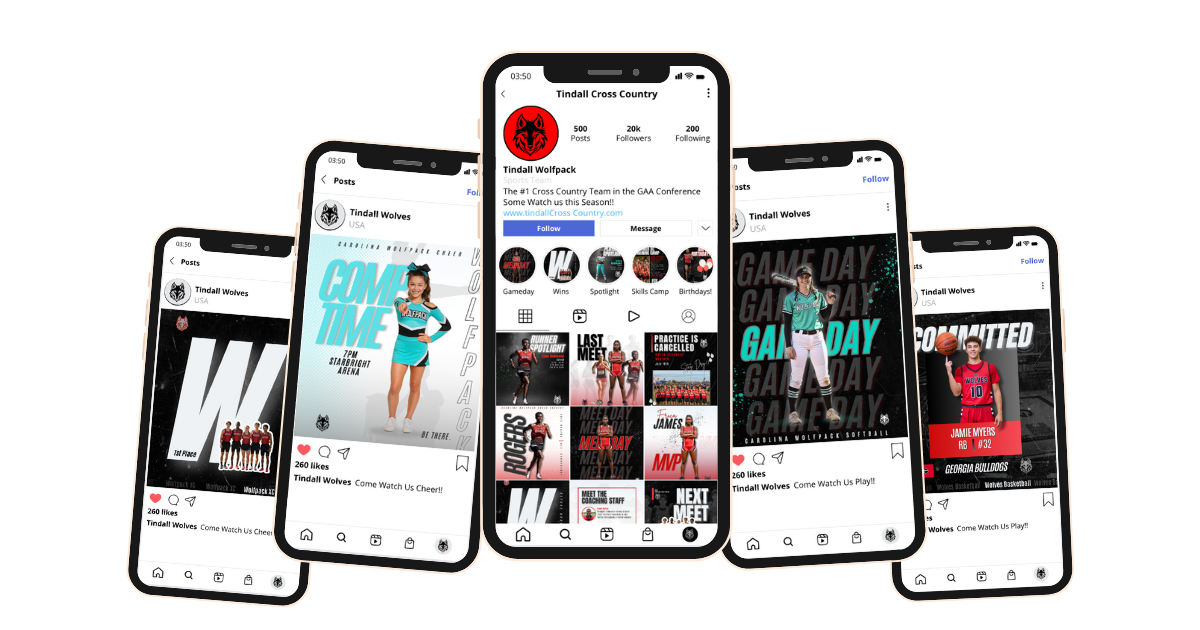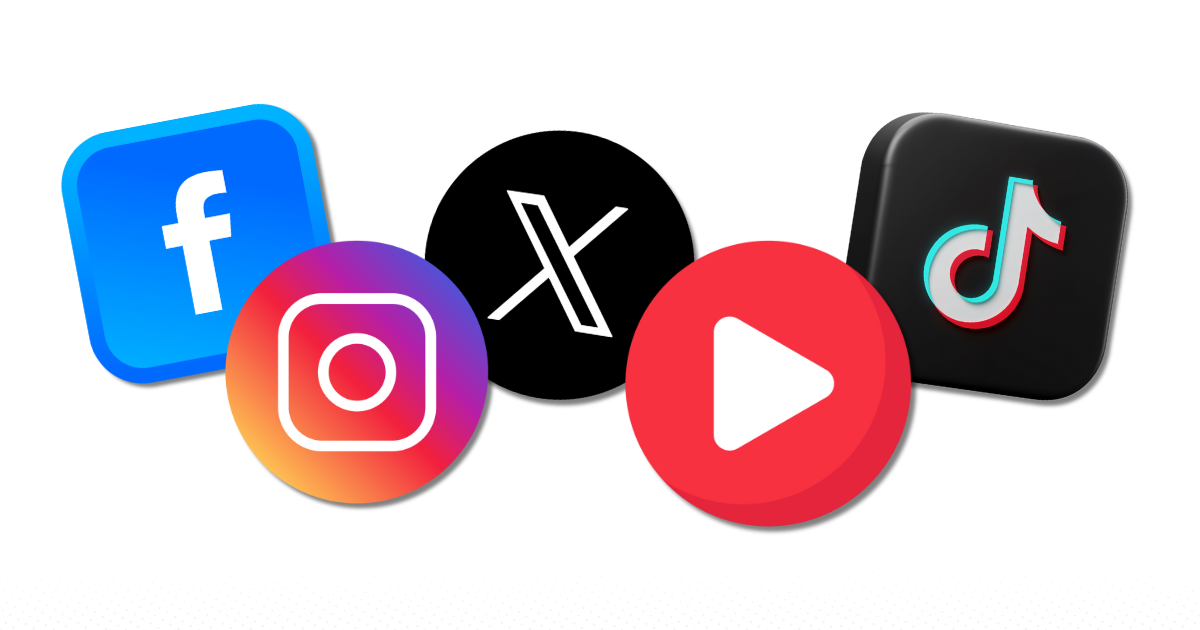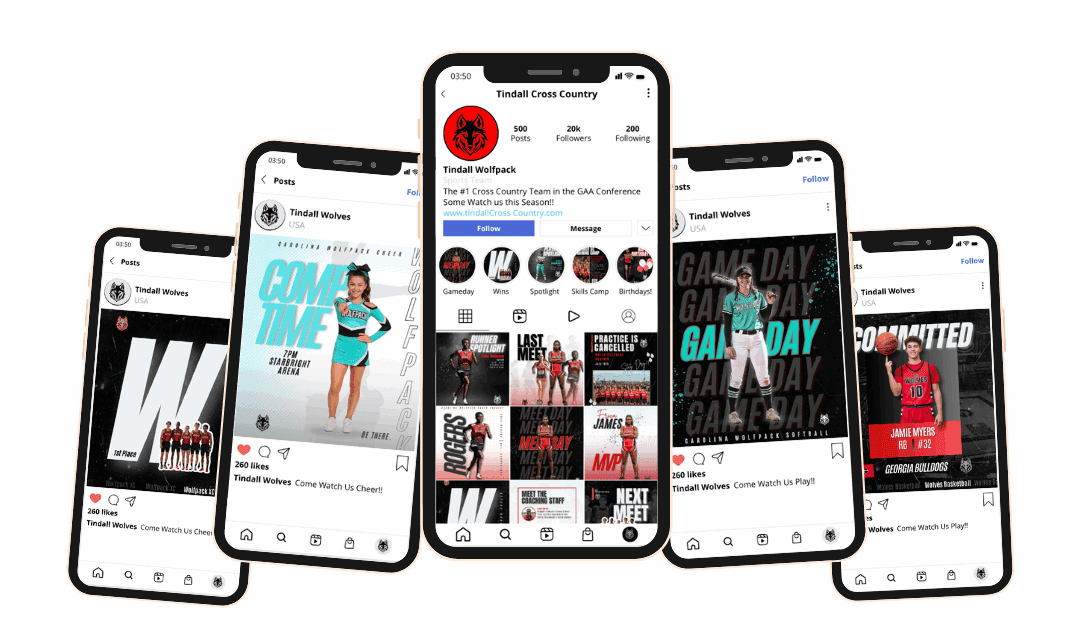
Why a Youth Sports Social Media Strategy Matters
A strong youth sports social media strategy goes far beyond posting game scores. It’s about building a recognizable brand, engaging families and athletes, and creating a sense of community. When done right, social media becomes a powerful tool to grow your program, strengthen team spirit, and connect with supporters in meaningful ways.
1. Build a Brand Identity for Your Sports Program
First, your social presence should look polished and consistent. Using a cohesive color palette, clean typography, and your logo across platforms helps your team appear professional and trustworthy.
Tone and voice also matter. Communicate with optimism, inclusivity, and a growth mindset—much like collegiate and professional programs model in their social channels. This consistency builds credibility and makes your content instantly recognizable.

2. Choose Platforms to Power Your Youth Sports Social Media Strategy
Not all platforms are created equal. Instead of trying to post everywhere, focus on where your audience spends time:
-
Facebook: Great for reaching parents with updates, photos, and event reminders.
-
Instagram & TikTok: Perfect for short, eye-catching videos, behind-the-scenes reels, and highlight clips.
-
YouTube: Ideal for longer-form content like highlight reels, training tips, or season recaps.
By choosing strategically, you’ll maximize impact without overwhelming your team.
3. Be Consist and Plan Content for Youth Sports Social Media
Consistency is key. Even one to two posts per week keeps your program visible and top-of-mind. A content calendar helps prevent last-minute scrambling and ensures your posts feel intentional.
Creating templates—for game-day graphics, practice highlights, player spotlights, and alumni features—saves time and keeps your feed on-brand. Over time, families will look forward to these recurring posts.
4. Create Engaging Content for Athletes and Families
Engagement happens when your posts provide value. Instead of just broadcasting updates, share content that excites, inspires, or educates.
-
Post motivational quotes or quick athlete tips.
-
Celebrate milestones like birthdays, team wins, or community service projects.
-
Share behind-the-scenes moments that families love to repost.
This mix not only builds visibility but also fosters emotional connections with your community.
5. Foster Community Through Your Youth Sports Social Media Strategy
Social media works best when it’s two-way. Respond to comments and messages promptly, and encourage families, athletes, and coaches to tag your account in their posts. This user-generated content expands your reach while strengthening community bonds.
Using relevant hashtags like #YouthSports, #GameDay, or your team name also helps increase visibility. If your budget allows, consider boosting top-performing posts or running ads during registration season to reach more local families.
6. Track Success and Adjusting Your Social Media Strategy

Finally, measure your results. Track likes, shares, comments, and follower growth to see what’s working. Pay attention to the types of posts that get the most engagement—whether highlight reels, testimonials, or behind-the-scenes clips—and do more of what resonates.
By monitoring and adjusting, your youth sports social media strategy will evolve into a powerful engine for connection and growth.
Conclusion
A thoughtful youth sports social media strategy is about more than just posting—it’s about building trust, consistency, and connection. Start with clear goals, use a cohesive brand identity, plan content in advance, and focus on authentic engagement. Over time, your program will not only inform families but also inspire athletes and supporters.
👉 Want ready-to-use templates to make social media easier? Check out our resources and shop for customizable graphics, fundraisers, and posting guides designed just for youth sports programs.

